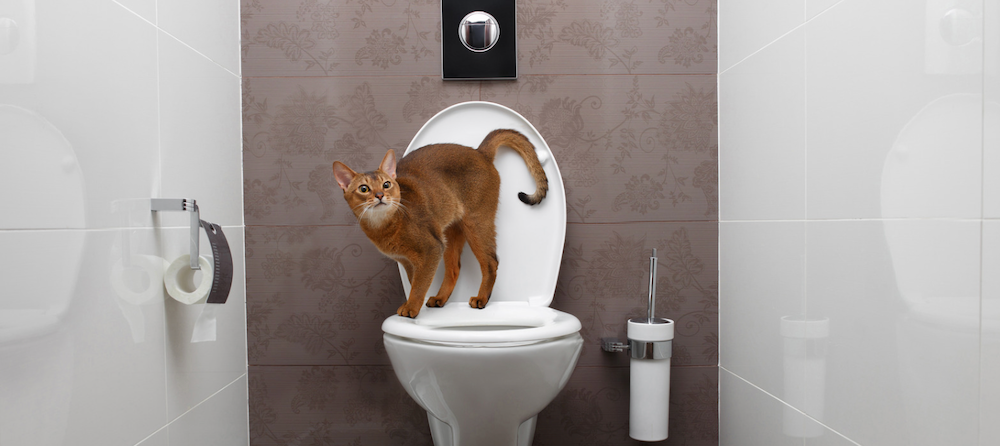The article below about Why you should never flush dog poop down the toilet is fairly captivating. Don't miss it.

When it concerns disposing of waste, specifically animal waste, many people often resort to the practical choice of flushing it down the commode. Nonetheless, this apparently simple remedy can have severe effects for the setting and public health. In this write-up, we'll explore why flushing pet waste down the toilet is a negative idea and give alternative methods for correct disposal.
Intro
Correct garbage disposal is essential for keeping ecological sustainability and public health. While it might appear safe to flush animal waste down the commode, it can lead to various issues, both for the setting and human well-being.
Threats of flushing animal waste
Environmental impact
Flushing pet waste introduces dangerous germs and microorganisms right into rivers, which can negatively affect aquatic ecosystems. These pathogens can contaminate water sources and injury marine life, interrupting fragile ecological communities.
Public health issues
Animal waste contains damaging bacteria such as E. coli and Salmonella, which can pose severe health dangers to people. Flushing pet waste down the toilet can pollute water products, resulting in the spread of illness and infections.
Alternatives to flushing
Rather than purging pet waste down the bathroom, there are numerous alternative disposal methods that are extra eco-friendly and hygienic.
Composting
Composting pet waste is a green way to deal with it. By composting, raw material is broken down into nutrient-rich soil, which can be used to fertilize yards and plants.
Landfill disposal
Dealing with animal waste in a garbage dump is another option. While not as eco-friendly as composting, it is a much safer option to flushing, as it prevents the contamination of water resources.
Pet dog garbage disposal systems
There are customized pet dog waste disposal systems offered that safely and hygienically take care of animal waste. These systems typically make use of enzymes to break down waste and remove odors.
Steps to correct pet garbage disposal
To guarantee appropriate disposal of pet waste, comply with these steps:
Scooping and getting waste
On a regular basis scoop and bag animal waste utilizing biodegradable bags. This stops waste from polluting the setting.
Using marked waste containers
Dispose of bagged animal waste in assigned waste containers, such as garden compost containers or land fill containers. Avoid flushing it down the commode at all expenses.
Cleansing can and family pet areas consistently
Regularly clean litter boxes and pet locations to stop the build-up of waste and germs. Use pet-safe cleaning items to keep hygiene.
Advantages of appropriate disposal approaches
Embracing correct disposal techniques for animal waste provides several advantages:
Minimized environmental pollution
Correct disposal approaches decrease the danger of environmental pollution, shielding rivers and environments from contamination
Reduced threat of water contamination.
By staying clear of flushing pet waste down the commode, the risk of water contamination is substantially lowered, guarding public health.
Enhanced hygiene and health
Correct disposal methods advertise far better cleanliness and hygiene, creating a more secure setting for both human beings and animals.
Conclusion
In conclusion, flushing pet waste down the toilet is damaging to the setting and public health. By taking on alternative disposal approaches and adhering to proper waste monitoring techniques, we can decrease the unfavorable effect of pet waste and contribute to a cleaner, healthier world.
Why You Should Never Flush Cat Poop Down the Toilet
A rose by any other name might smell as sweet, but not all poop is created equal. Toilets, and our sewage systems, are designed for human excrement, not animal waste. It might seem like it couldn’t hurt to toss cat feces into the loo, but it’s not a good idea to flush cat poop in the toilet.
First and foremost, assuming your cat uses a litter box, any waste is going to have litter on it. And even the smallest amount of litter can wreak havoc on plumbing.
Over time, small amounts build up, filling up your septic system. Most litter sold today is clumping; it is made from a type of clay that hardens when it gets wet. Ever tried to scrape old clumps from the bottom of a litter box? You know just how cement-hard it can get!
Now imagine just a small clump of that stuck in your pipes. A simple de-clogger like Drano isn’t going to cut it. And that means it’s going to cost you big time to fix it.
For an amusing, graphic tale of what happens when you flush too much litter down the toilet all at once, take a few minutes to read Gene Weingarten’s 2017 Washington Post column “So that’s what happens when you flush cat litter down the toilet.”
Parasitic Contamination
Believe it or not, your healthy kitty may be harboring a nasty parasite. Only cats excrete Toxoplasma in their feces. Yet it rarely causes serious health issues in the cats that are infected. Most people will be fine too if infected. Only pregnant women and people with compromised immune systems are at risk. (If you’ve ever heard how women who are expecting are excused from litter cleaning duty, Toxoplasma is why.)
But other animals may have a problem if infected with the parasite. And human water treatment systems aren’t designed to handle it. As a result, the systems don’t remove the parasite before discharging wastewater into local waterways. Fish, shellfish, and other marine life — otters in particular — are susceptible to toxoplasma. If exposed, most will end up with brain damage and many will die.
Depending on the species of fish, they may end up on someone’s fish hook and, ultimately on someone’s dinner plate. If that someone has a chronic illness, they’re at risk.
Skip the Toilet Training
We know there are folks out there who like to toilet train their cats. And we give them props, it takes a lot of work. But thanks to the toxoplasma, it’s not a good idea.
Leave the toilet to the humans, and accept your future litter cleaning duty.

Regularly clean litter boxes and pet locations to stop the build-up of waste and germs. Use pet-safe cleaning items to keep hygiene.
Advantages of appropriate disposal approaches
Embracing correct disposal techniques for animal waste provides several advantages:
Minimized environmental pollution
Correct disposal approaches decrease the danger of environmental pollution, shielding rivers and environments from contamination
Reduced threat of water contamination.
By staying clear of flushing pet waste down the commode, the risk of water contamination is substantially lowered, guarding public health.
Enhanced hygiene and health
Correct disposal methods advertise far better cleanliness and hygiene, creating a more secure setting for both human beings and animals.
Conclusion
In conclusion, flushing pet waste down the toilet is damaging to the setting and public health. By taking on alternative disposal approaches and adhering to proper waste monitoring techniques, we can decrease the unfavorable effect of pet waste and contribute to a cleaner, healthier world.
Why You Should Never Flush Cat Poop Down the Toilet
A rose by any other name might smell as sweet, but not all poop is created equal. Toilets, and our sewage systems, are designed for human excrement, not animal waste. It might seem like it couldn’t hurt to toss cat feces into the loo, but it’s not a good idea to flush cat poop in the toilet.
First and foremost, assuming your cat uses a litter box, any waste is going to have litter on it. And even the smallest amount of litter can wreak havoc on plumbing.
Over time, small amounts build up, filling up your septic system. Most litter sold today is clumping; it is made from a type of clay that hardens when it gets wet. Ever tried to scrape old clumps from the bottom of a litter box? You know just how cement-hard it can get!
Now imagine just a small clump of that stuck in your pipes. A simple de-clogger like Drano isn’t going to cut it. And that means it’s going to cost you big time to fix it.
For an amusing, graphic tale of what happens when you flush too much litter down the toilet all at once, take a few minutes to read Gene Weingarten’s 2017 Washington Post column “So that’s what happens when you flush cat litter down the toilet.”
Parasitic Contamination
Believe it or not, your healthy kitty may be harboring a nasty parasite. Only cats excrete Toxoplasma in their feces. Yet it rarely causes serious health issues in the cats that are infected. Most people will be fine too if infected. Only pregnant women and people with compromised immune systems are at risk. (If you’ve ever heard how women who are expecting are excused from litter cleaning duty, Toxoplasma is why.)
But other animals may have a problem if infected with the parasite. And human water treatment systems aren’t designed to handle it. As a result, the systems don’t remove the parasite before discharging wastewater into local waterways. Fish, shellfish, and other marine life — otters in particular — are susceptible to toxoplasma. If exposed, most will end up with brain damage and many will die.
Depending on the species of fish, they may end up on someone’s fish hook and, ultimately on someone’s dinner plate. If that someone has a chronic illness, they’re at risk.
Skip the Toilet Training
We know there are folks out there who like to toilet train their cats. And we give them props, it takes a lot of work. But thanks to the toxoplasma, it’s not a good idea.
Leave the toilet to the humans, and accept your future litter cleaning duty.

I ran across that post about Don't Flush Your Pets Poo Down The Loo, Vet Warns while doing a search on the search engines. Loved our write-up? Please share it. Help someone else discover it. I value your readership.
Call Today